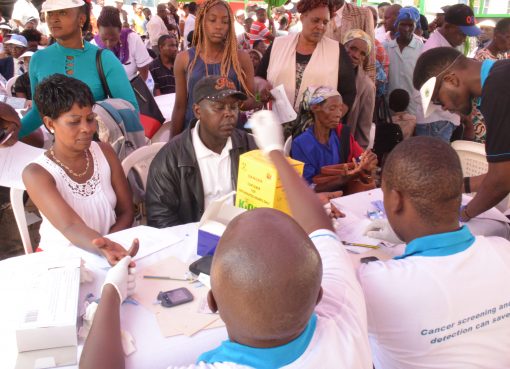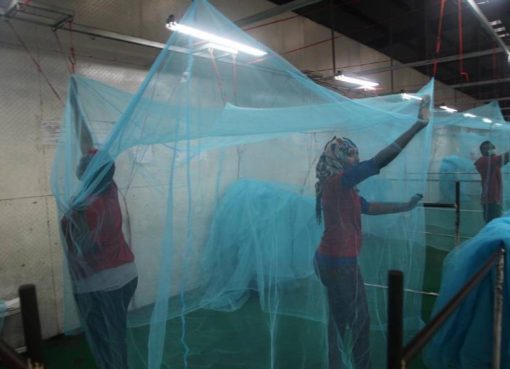Hundreds of feet beneath the grounds of gemstone mining fields of Taita-Taveta lies a fortune so vast it is rumoured to dwarf the legendary treasures of Mansa Musa, the richest king of Timbuktu.
It is said there are colossal deposits of gemstones and other high-value precious stones; Tsavorite, Tanzanite, rubies and tourmalines-all awaiting to transform paupers into instant multi-millionaires.
Such riches radiate irresistible allure. For ages, droves of miners have flocked to the mines to lay a stake in this high-risk sector where fortunes are made and lost in a flash.
Only the strong at heart survive. The land is spectacularly hostile; the environment is harsh; the weather is brutal and unforgiving. Still, the grim odds are fair. For miners under spell of this hidden wealth, the risks are acceptable because the rewards, when they come, are often enormous and life changing.
However, this subterranean fortune is laced with spooky superstitions and creepy tales. From the plains of Mkuki in Mwatate to the towering cliffs of Kasigau in Voi and sun scorched Kishushe in Wundanyi, armies of scruffy artisanal miners with an undying affinity for the supernatural tell of those strange tales in hushed tones.
They speak of nameless malignant spirits that frustrate miners. Others talk of mysterious forces that wield control over rubies. These spirits are the gatekeepers; ultimate guardians of the doorway to the kingdom of eternal wealth.
“Such myths exist. These should not have a place in the modern mining sector,” says Rev. David Zowe, a veteran miner and the County Chair of Taita-Taveta Artisanal Miners Association.
For years, miners believed one’s success or failure depended on the temperament of these capricious spirits. If happy, the spirits turned benevolent and shepherded a miner to where his fortune awaited. If upset, they would mete out vicious penalties. Like Sisyphus in the Greek mythology, a miner would forever labour in the earth’s bowels without ever finding what he sought.
To appease them, miners engaged in esoteric rites to pacify the spirits, increase chances of finding the elusive gemstones and keep harm at bay. Sheep were slaughtered and hot blood sprinkled in the tunnels and rusty coins were tossed inside the mines. The most bizarre ritual involved bedding mentally feeble women believed to be talismans of good luck.
“It’s all nonsense! Those are false beliefs,” explains Ms. Peris Mlamba, a 74-years old miner from Wundanyi.
She terms the superstitions as retrogressive and unchristian; a fossilized remnant from a long-gone era where communities believed in witchcraft. She argues that linking gemstones with Satanism has only worked to keep thousands of local residents away from the sector and thereby exacerbating the poverty situation in the region.
When she disclosed her intention to try her luck in the mines, neighbours gawked at her in shock and dread. They talked of the mines’ murky history and said gemstones carried a curse.
She shrugged it away saying emphatically, “I am a Christian and I know that gemstones are God’s gift to us. There is nothing demonic about them,” the septuagenarian argues. In a display of wisdom that comes with age, she terms gemstone as the only resource Taita-Taveta County could benefit from.
“Each region has its resources. Nyanza has fish, Central has coffee and Rift Valley has tea. Taita has gemstones. This is our share of God’s blessings,” she says.
Mama Mlamba embodies a new generation of artisanal miners who have embraced pragmatism to fight off quirky beliefs and superstition as a way of encouraging more residents to join the mining sector.
That hoaxes, superstitions and retrogressive cultural beliefs have held sway in a sector that could transform lives in a region buckling under the yoke of extreme poverty is not in doubt. Such cultural factors are used as examples of how traditions could be catalysts for poverty by repulsing suffering locals from a sector famed for creating billionaires. Ironically, other investors, impervious to the whims of these spirits, have made large fortunes from the mines.
Debauchery, wild merrymaking and unbridled extravagance that miners engage in after selling gemstones further fuel the beliefs that gemstone money is jinxed. In the 90s, a miner who got millions became a legend after turning Voi and Mwatate towns into his fiefdom. He hired dozens of top-of-the-range vehicles that escorted him whenever he went. He even had a live-band tag along to entertain. In pubs, he would pick up all bills, buy all the beer and tip revellers who called him ‘boss.’
In another bizarre incident, a young miner took up residence in a five-star hotel after selling gemstones. It is said he spent most of his days in a white bathrobe, sipping wine and taking photos of his opulence. When bored, he strolled along corridors hunting for valets to provoke into a fight. He knew he could pay them off.
Recently, a young miner became a fleeting sensation after hiring bodaboda riders to escort him from Mwatate to Kasigau; almost one hundred kilometers away. Once there, he ordered a bartender to wash his dusty bike with beer instead of water.
“Such profligacy comes from lack of financial literacy and it’s the shortest path back to poverty. When such a fortune is lost, people blame it on evil spirits,” explains Rev. Zowe. This explains the heart-breaking tales of miners who lost millions and returned the backbreaking labour in the mines with nothing.
Through the Mining Act of 2016, the Ministry of Mining has been progressively been fighting poverty amongst miners from the grassroots level. The Act has become a potent tool in debunking illogical beliefs through formally recognizing artisanal miners and actively encouraging them to get into the sector.
The artisanal miners have formed organizations that promote mining activities, conduct training and create market linkages for their gemstones.
“We are gradually demystifying the sector. The training we are getting has eroded the superstitious beliefs that once existed. More people are joining in and benefit from financial literacy lessons,” he said.
Signs of growth are indicated through collaborations with other organizations. This is to promote the welfare of its members. Key amongst the partners is Taita-Taveta University (TTU). The varsity offers financial literacy to artisanal miners, courses of mining and assists in formulation of strategic plans.
The Dean of School of Mining at TTU Dr. Bernard Aluda says miners need to embrace sustainable mining best practices. Because gemstones are non-renewable resources, he insists on strategic investments that would see future generations benefit from this resource.
“Sustainability is key because gemstones are non-renewable. We need strategies on how generations to come can benefit,” he said.
Currently, there are over 4,000 artisanal miners in the region. They are found in areas like Mkuki, Alia, Chungaunga, Kasigau, Kishushe and Maungu. To date, around 300 have registered with the associations as efforts intensify to have all such miners into organized groups.
The association recently partnered with African Social Financing Center to boost training and offer financial support to miners. The center will bolster market availability and help miners form Tsavorite Marketing and Auction Center. This is a gemstone selling company to find a market for members’ gemstones.
“We will deal directly with the buyers and not brokers. This will increase earnings for our members,” he explained.
Last week, the government issued the miners’ association with a dealership license. This giant leap implies the miners can buy and sell gemstones without relying on intermediaries.
The manager for Voi Gemology Center Mr. Edward Omito says minerals could transform the region. He urged artisanal miners to work closely with the ministry and utilize the gemology center for maximum benefits.
“This center will give you value for money. We will also give expert advice to miners to see the sector grow,” he said.
Taita-Taveta County also has industrial minerals including iron ore and limestone.
By Wagema Mwangi




